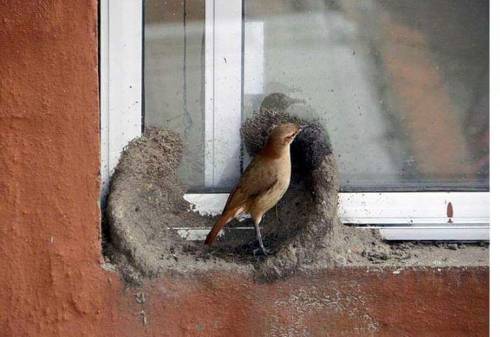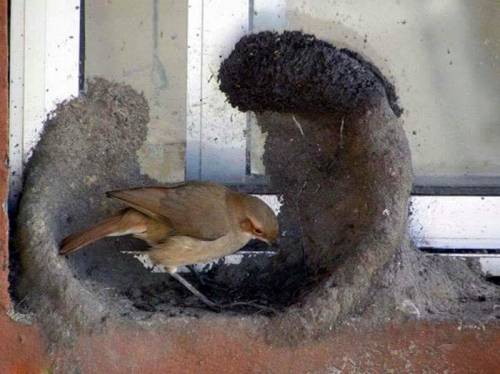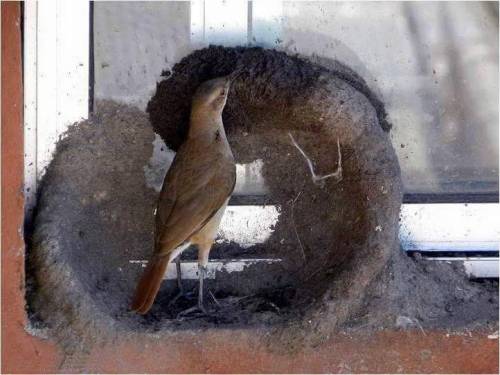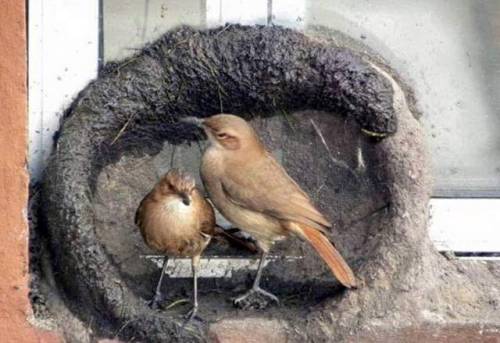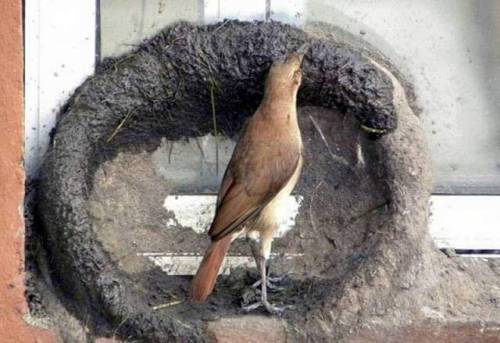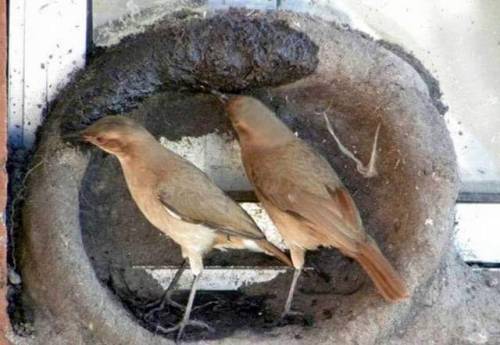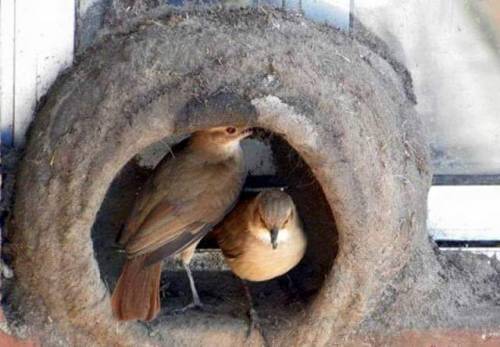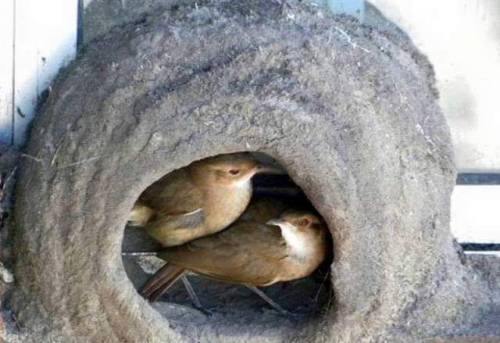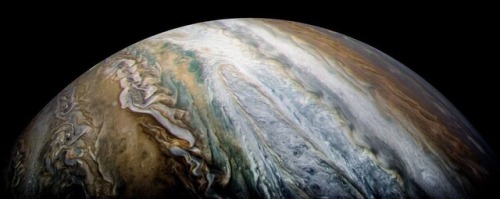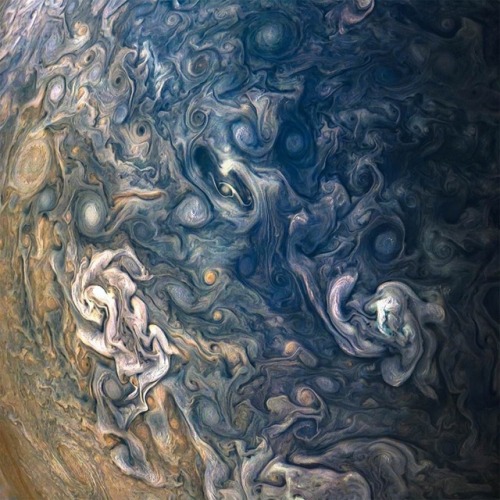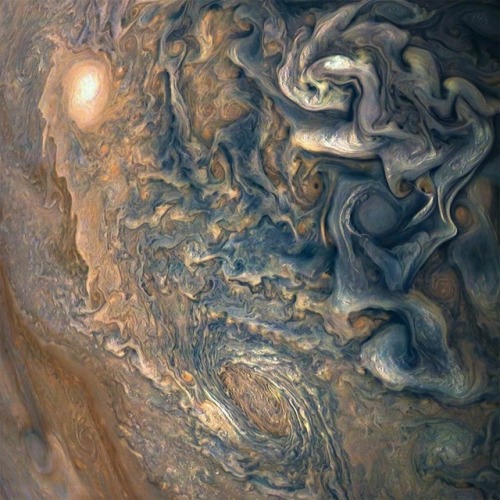It Often Seems So Quiet After A Snowfall Because The Fresh Powder Absorbs Sound Waves. As The Snow Melts

It often seems so quiet after a snowfall because the fresh powder absorbs sound waves. As the snow melts and freezes, it then creates a reflective surface that allows sound to travel farther than normal. Source
More Posts from Science-is-magical and Others
New technique captures the activity of an entire brain in a snapshot
When it comes to measuring brain activity, scientists have tools that can take a precise look at a small slice of the brain (less than one cubic millimeter), or a blurred look at a larger area. Now, researchers at The Rockefeller University have described a new technique that combines the best of both worlds—it captures a detailed snapshot of global activity in the mouse brain.

(Image caption: Sniff, sniff: This density map of the cerebral cortex of a mouse shows which neurons get activated when the animal explores a new environment. The lit up region at the center (white and yellow) represents neurons associated with the mouse’s whiskers)
“We wanted to develop a technique that would show you the level of activity at the precision of a single neuron, but at the scale of the whole brain,” says study author Nicolas Renier, a postdoctoral fellow in the lab of Marc Tessier-Lavigne, Carson Family Professor and head of the Laboratory of Brain Development and Repair, and president of Rockefeller University.
The new method, described in Cell, takes a picture of all the active neurons in the brain at a specific time. The mouse brain contains dozens of millions of neurons, and a typical image depicts the activity of approximately one million neurons, says Tessier-Lavigne. “The purpose of the technique is to accelerate our understanding of how the brain works.”
Making brains transparent
“Because of the nature of our technique, we cannot visualize live brain activity over time—we only see neurons that are active at the specific time we took the snapshot,” says Eliza Adams, a graduate student in Tessier-Lavigne’s lab and co-author of the study. “But what we gain in this trade-off is a comprehensive view of most neurons in the brain, and the ability to compare these active neuronal populations between snapshots in a robust and unbiased manner.”
Here’s how the tool works: The researchers expose a mouse to a situation that would provoke altered brain activity—such as taking an anti-psychotic drug, brushing whiskers against an object while exploring, and parenting a pup—then make the measurement after a pause. The pause is important, explains Renier, because the technique measures neuron activity indirectly, via the translation of neuronal genes into proteins, which takes about 30 minutes to occur.
The researchers then treat the brain to make it transparent—following an improved version of a protocol called iDISCO, developed by Zhuhao Wu, a postdoctoral associate in the Tessier-Lavigne lab—and visualize it using light-sheet microscopy, which takes the snapshot of all active neurons in 3-D.
To determine where an active neuron is located within the brain, Christoph Kirst, a fellow in Rockefeller’s Center for Studies in Physics and Biology, developed software to detect the active neurons and to automatically map the snapshot to a 3-D atlas of the mouse brain, generated by the Allen Brain Institute.
Although each snapshot of brain activity typically includes about one million active neurons, researchers can sift through that mass of data relatively quickly if they compare one snapshot to another snapshot, says Renier. By eliminating the neurons that are active in both images, researchers are left only those specific to each one, enabling them to home in on what is unique to each state.
Observing and testing how the brain works
The primary purpose of the tool, he adds, is to help researchers generate hypotheses about how the brain functions that then can be tested in other experiments. For instance, using their new techniques, the researchers, in collaboration with Catherine Dulac and other scientists at Harvard University, observed that when an adult mouse encounters a pup, a region of its brain known to be active during parenting—called the medial pre-optic nucleus, or MPO—lights up. But they also observed that, after the MPO area becomes activated, there is less activity in the cortical amygdala, an area that processes aversive responses, which they found to be directly connected to the MPO “parenting region.”
“Our hypothesis,” says Renier, “is that parenting neurons put the brake on activity in the fear region, which may suppress aversive responses the mice may have towards pups.” Indeed, mice that are being aggressive to pups tend to show more activity in the cortical amygdala.
To test this idea, the next step is to block the activity of this brain region to see if this reduces aggression in the mice, says Renier.
The technique also has broader implications than simply looking at what areas of the mouse brain are active in different situations, he adds. It could be used to map brain activity in response to any biological change, such as the spread of a drug or disease, or even to explore how the brain makes decisions. “You can use the same strategy to map anything you want in the mouse brain,” says Renier.
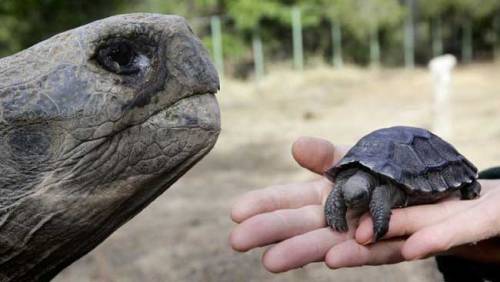
Baby Tortoises Show Up In The Galapagos For The First Time In Over A Century
There hadn’t been one single baby tortoise sighting in more than a century on the Galapagos Island of Pinzon, until a small group of the tiny, shelled youngsters were spotted this year.
The recent births are helping to pull the critically endangered animals back from the brink of extinction after they were nearly laid to waste as a result of human activity.
This is huge news for a species that has been struggling to survive for a century, relying on humans raising young tortoises bred in captivity until they are large enough to not fall prey to rats and predators.

“Surface tension dictates the spherical cap shape of small sessile drops, whereas gravity flattens larger drops into millimeter-thick flat puddles. In contrast with drops, soap bubbles remain spherical at much larger sizes. However, we demonstrate experimentally and theoretically that meter-sized bubbles also flatten under their weight, and we compute their shapes. We find that mechanics does not impose a maximum height for large soap bubbles, but, in practice, the physicochemical properties of surfactants limit the access to this self-similar regime where the height grows as the radius to the power 2/3. An exact analogy shows that the shape of giant soap bubbles is nevertheless realized by large inflatable structures.” Via.
Good news today: the fastest horizontal flyer in the animal kingdom is now a bat.
Free-tailed bats have now been clocked flying horizontally at over 160 kilometers per hour (that’s nearly 100 mph!), toppling the previous record-holder, the swift. The record for speed of diving is still held by the peregrine falcon but we’re coming for you next, feathers.
Source
Blind people gesture (and why that’s kind of a big deal)
People who are blind from birth will gesture when they speak. I always like pointing out this fact when I teach classes on gesture, because it gives us an an interesting perspective on how we learn and use gestures. Until now I’ve mostly cited a 1998 paper from Jana Iverson and Susan Goldin-Meadow that analysed the gestures and speech of young blind people. Not only do blind people gesture, but the frequency and types of gestures they use does not appear to differ greatly from how sighted people gesture. If people learn gesture without ever seeing a gesture (and, most likely, never being shown), then there must be something about learning a language that means you get gestures as a bonus.
Blind people will even gesture when talking to other blind people, and sighted people will gesture when speaking on the phone - so we know that people don’t only gesture when they speak to someone who can see their gestures.
Earlier this year a new paper came out that adds to this story. Şeyda Özçalışkan, Ché Lucero and Susan Goldin-Meadow looked at the gestures of blind speakers of Turkish and English, to see if the *way* they gestured was different to sighted speakers of those languages. Some of the sighted speakers were blindfolded and others left able to see their conversation partner.
Turkish and English were chosen, because it has already been established that speakers of those languages consistently gesture differently when talking about videos of items moving. English speakers will be more likely to show the manner (e.g. ‘rolling’ or bouncing’) and trajectory (e.g. ‘left to right’, ‘downwards’) together in one gesture, and Turkish speakers will show these features as two separate gestures. This reflects the fact that English ‘roll down’ is one verbal clause, while in Turkish the equivalent would be yuvarlanarak iniyor, which translates as two verbs ‘rolling descending’.
Since we know that blind people do gesture, Özçalışkan’s team wanted to figure out if they gestured like other speakers of their language. Did the blind Turkish speakers separate the manner and trajectory of their gestures like their verbs? Did English speakers combine them? Of course, the standard methodology of showing videos wouldn’t work with blind participants, so the researchers built three dimensional models of events for people to feel before they discussed them.
The results showed that blind Turkish speakers gesture like their sighted counterparts, and the same for English speakers. All Turkish speakers gestured significantly differently from all English speakers, regardless of sightedness. This means that these particular gestural patterns are something that’s deeply linked to the grammatical properties of a language, and not something that we learn from looking at other speakers.
References
Jana M. Iverson & Susan Goldin-Meadow. 1998. Why people gesture when they speak. Nature, 396(6708), 228-228.
Şeyda Özçalışkan, Ché Lucero and Susan Goldin-Meadow. 2016. Is Seeing Gesture Necessary to Gesture Like a Native Speaker? Psychological Science 27(5) 737–747.
Asli Ozyurek & Sotaro Kita. 1999. Expressing manner and path in English and Turkish: Differences in speech, gesture, and conceptualization. In Twenty-first Annual Conference of the Cognitive Science Society (pp. 507-512). Erlbaum.
Uhmm, how exactly were all of those megafauna able to grow that large and function??? And how the fuck was that giant bird actually able to fly????????
Realistic answer? Mostly because humans hadn’t come around and hunted them all to extinction yet. Dinosaurs are exempt from this because they vastly predated us, but almost anything that coincided with our timeline, we killed.
We are, for our relatively small size and frail, sometimes clumsy physical characteristics, a TERRIFYING species.
Evolution has produced all kinds of Big Shit. Ever seen a Paraceratherium?


Or a size chart for Sauropods that wasn’t produced before 1970?


Evolution likes to make things big. It tries this all the time. Whenever there’s a plentiful food source and enough space, things just get bigger and bigger.
The largest animal to have ever lived is alive right now. It’s the blue whale. And it’s truly a masterpiece of evolution’s drive to Go Bigger.



HOW THIS HAPPEN.
Basically, because they live in the ocean, space isn’t really an issue for them, and thanks to buoyancy, neither is their frankly ALARMING weight. The only real limit to their size is chemistry – whether they can possibly metabolize enough energy fast enough to stay alive at their size. Blue whales are estimated (having, for obvious reasons, never been measured in one piece) to be able to reach over 200 tons. As an average weight. Fluctuating with their feeding season. This was for a 98 foot long whale. The longest whales ever measured were 110 feet and 109 feet, both females. (Males tend to be slightly shorter, but heavier at any given length).
A blue whale can hold over 90 tons of food and water in its mouth.
They need 1.5 million kilocalories of food per day.
Blue whales are MASSIVE.
They are not the LONGEST animal in the world, though, just the heaviest. The longest is likely one of two things: the Lions Mane Jellyfish or the Bootlace Worm. The longest recorded Lions Mane Jellyfish washed up on shore with tentacles measuring 120 feet. It is unknown if they can be longer than this, but certainly possible given how fragile they are and the fact that this is just one that happened to get washed up on a beach.
The longest recorded bootlace worm SMASHES this record, but because of its stretchy body and the date of the recording (1864), the scientific accuracy is disputed. It also washed up on shore and measured 180 feet.
How far off topic am I this time?
Anyway yes animals get big sometimes. It helps deter predators when you’re too big to be hunted by anything. The only natural predator of the blue whale is killer whales. Regarding bears specifically, Brown Bears are in far more trouble than Black Bears because the Brown Bear line trends toward going bigger, which makes them easier targets for humans, while Black Bears have evolved to be shy and stealthy and avoid human contact. As a result, Brown bears are far larger, but far more likely to be driven to extinction by humans. Nature functions just fine if it’s left alone. We just ruin everything we touch. That’s why the largest individual crocodiles still living right now are the ones that have learned to avoid humans at all costs: conservation laws have not protected crocodiles from poaching long enough for them to get really, really big, even though we have significant historical records of crocodiles larger than what we generally see now. At least some of those records are considered to be reliable and put a couple extant crocodile species well over 20 feet – some over 22. The largest reliably measured crocodile was Lolong, a Saltwater crocodile in the Philippines who measured 20 feet 3 inches and died a few years ago.
And Argentavis magnificens was able to fly because it was designed to. Even with a massive 24 foot wingspan, it only weighed around 175 pounds, because birds have very lightweight skeletons. As impressive as the size was,

a living bird of that size probably weighed about as much, if not a bit less, than the man standing next to it. The surface area of its wings would have been sufficient to keep it in the air, mostly by gliding the way you see large modern birds of prey do. It would have resembled a condor or vulture, just much larger.




-
 3goldcoins reblogged this · 3 years ago
3goldcoins reblogged this · 3 years ago -
 passionate56v reblogged this · 4 years ago
passionate56v reblogged this · 4 years ago -
 passionate56v liked this · 4 years ago
passionate56v liked this · 4 years ago -
 ladyn2deep reblogged this · 4 years ago
ladyn2deep reblogged this · 4 years ago -
 dresserdrawer1278 liked this · 4 years ago
dresserdrawer1278 liked this · 4 years ago -
 ayushi1999 liked this · 4 years ago
ayushi1999 liked this · 4 years ago -
 wildgypsywind2 liked this · 4 years ago
wildgypsywind2 liked this · 4 years ago -
 thesensualdominant reblogged this · 4 years ago
thesensualdominant reblogged this · 4 years ago -
 ladyn2deep reblogged this · 5 years ago
ladyn2deep reblogged this · 5 years ago -
 thatsageukgat liked this · 5 years ago
thatsageukgat liked this · 5 years ago -
 the-last-001 liked this · 7 years ago
the-last-001 liked this · 7 years ago -
 wingsofocean reblogged this · 7 years ago
wingsofocean reblogged this · 7 years ago -
 skyenichol reblogged this · 7 years ago
skyenichol reblogged this · 7 years ago -
 masalaoflife reblogged this · 7 years ago
masalaoflife reblogged this · 7 years ago -
 1412sixty9 liked this · 7 years ago
1412sixty9 liked this · 7 years ago -
 ottefugl reblogged this · 7 years ago
ottefugl reblogged this · 7 years ago -
 coronaandhenn liked this · 7 years ago
coronaandhenn liked this · 7 years ago -
 mr2farnu liked this · 7 years ago
mr2farnu liked this · 7 years ago -
 oxymitch-archive liked this · 7 years ago
oxymitch-archive liked this · 7 years ago -
 fwicket1 reblogged this · 7 years ago
fwicket1 reblogged this · 7 years ago -
 fwicket1 liked this · 7 years ago
fwicket1 liked this · 7 years ago -
 bluehoodedhuntress liked this · 8 years ago
bluehoodedhuntress liked this · 8 years ago -
 radlyrad reblogged this · 8 years ago
radlyrad reblogged this · 8 years ago -
 kats-pajama3 reblogged this · 8 years ago
kats-pajama3 reblogged this · 8 years ago -
 amazingglobe reblogged this · 8 years ago
amazingglobe reblogged this · 8 years ago -
 science-is-magical reblogged this · 8 years ago
science-is-magical reblogged this · 8 years ago -
 orchidszs liked this · 8 years ago
orchidszs liked this · 8 years ago -
 ichigomillie reblogged this · 8 years ago
ichigomillie reblogged this · 8 years ago -
 partycorinade reblogged this · 8 years ago
partycorinade reblogged this · 8 years ago -
 iadorecoffeeandmovies reblogged this · 8 years ago
iadorecoffeeandmovies reblogged this · 8 years ago -
 jowolf2 liked this · 8 years ago
jowolf2 liked this · 8 years ago -
 adventuresfromthetardis reblogged this · 8 years ago
adventuresfromthetardis reblogged this · 8 years ago -
 foreverrmisunderstood liked this · 8 years ago
foreverrmisunderstood liked this · 8 years ago -
 aimingfit liked this · 8 years ago
aimingfit liked this · 8 years ago -
 salvatoreitmeanssaviour reblogged this · 8 years ago
salvatoreitmeanssaviour reblogged this · 8 years ago -
 masalaoflife reblogged this · 8 years ago
masalaoflife reblogged this · 8 years ago -
 adullflameofdesire reblogged this · 8 years ago
adullflameofdesire reblogged this · 8 years ago
